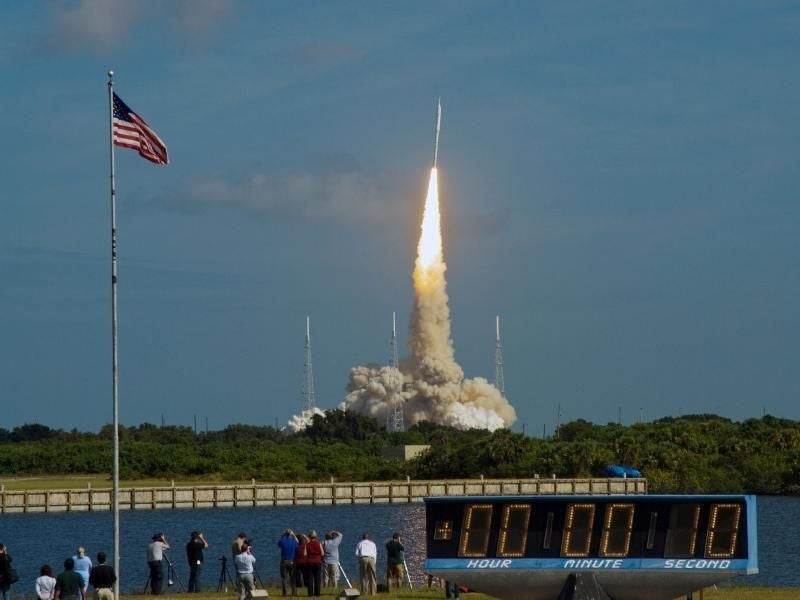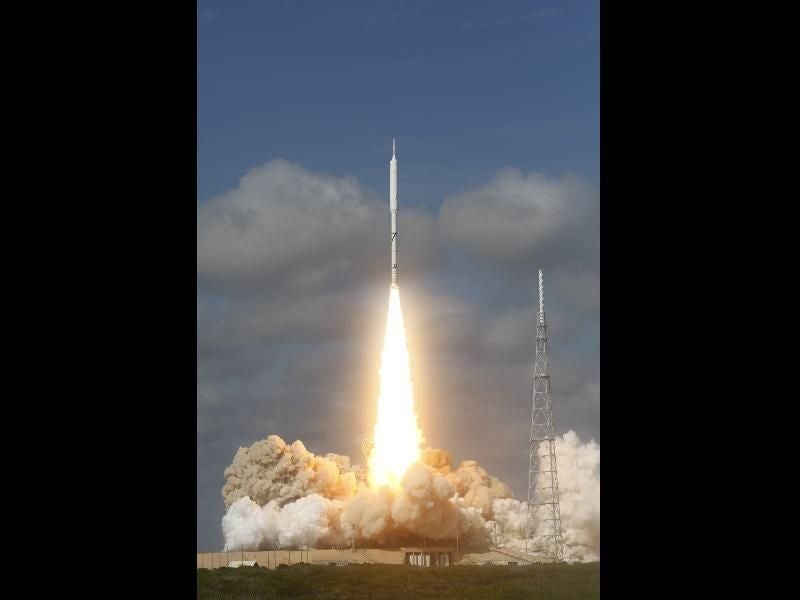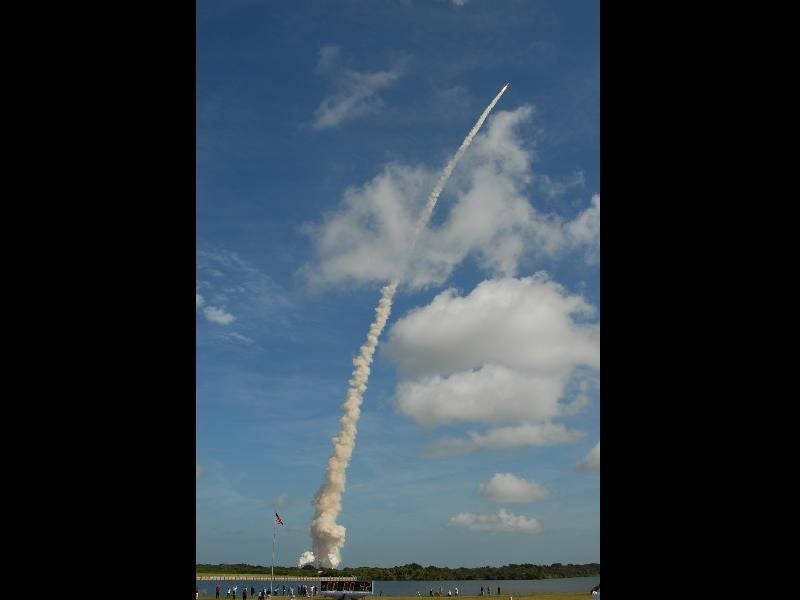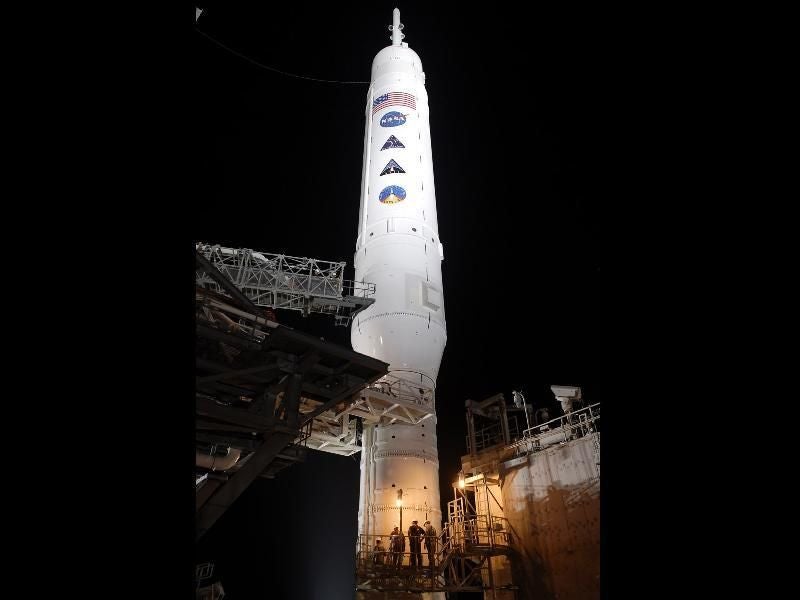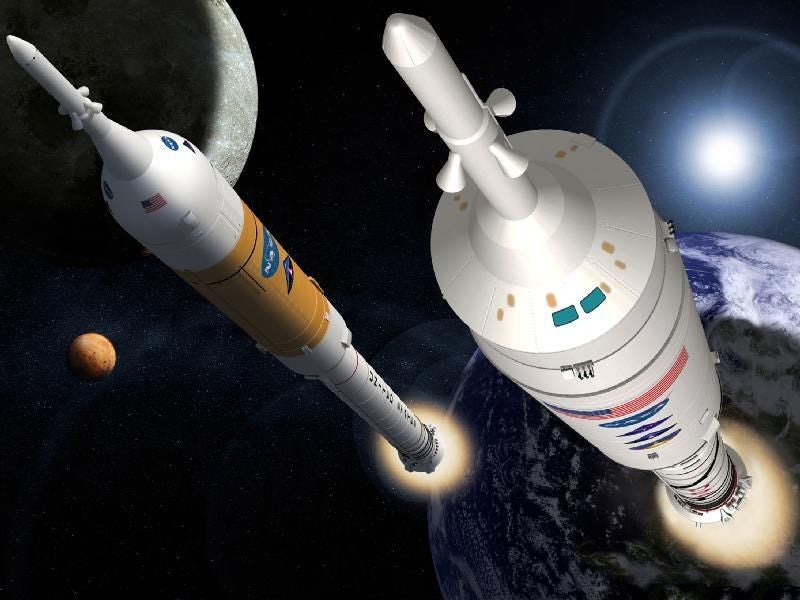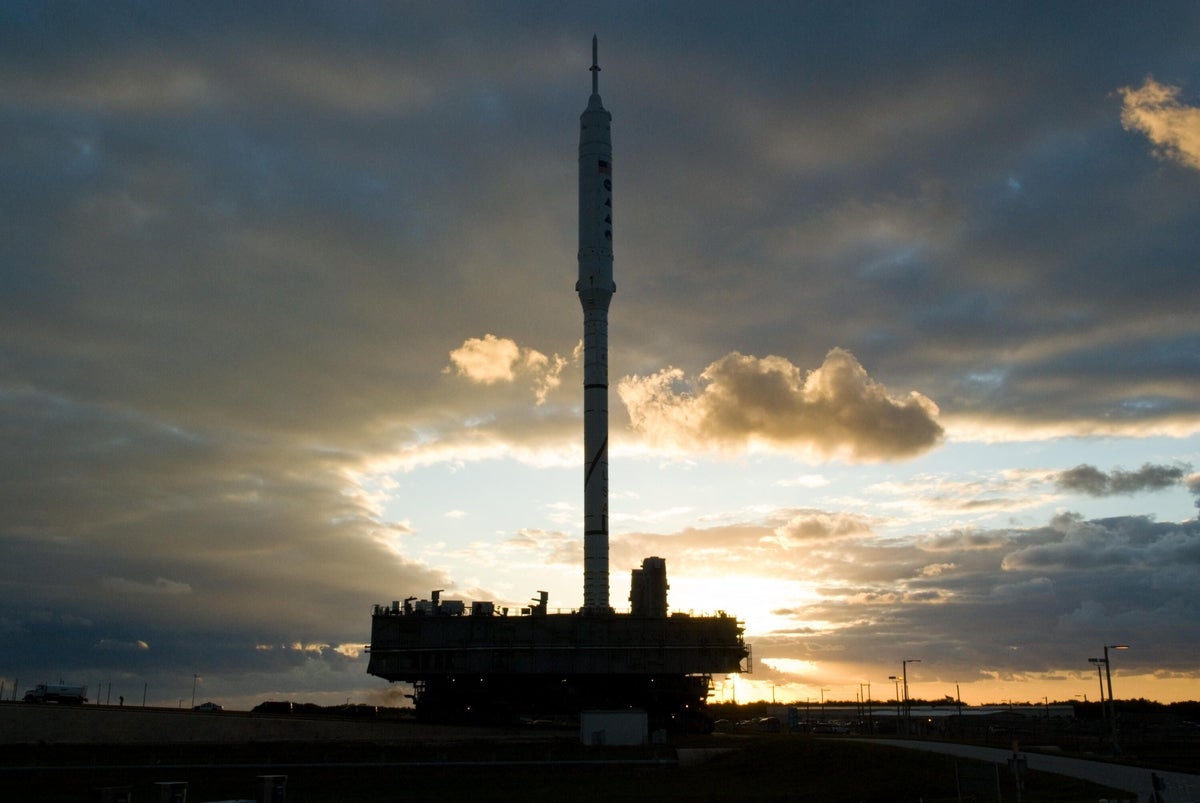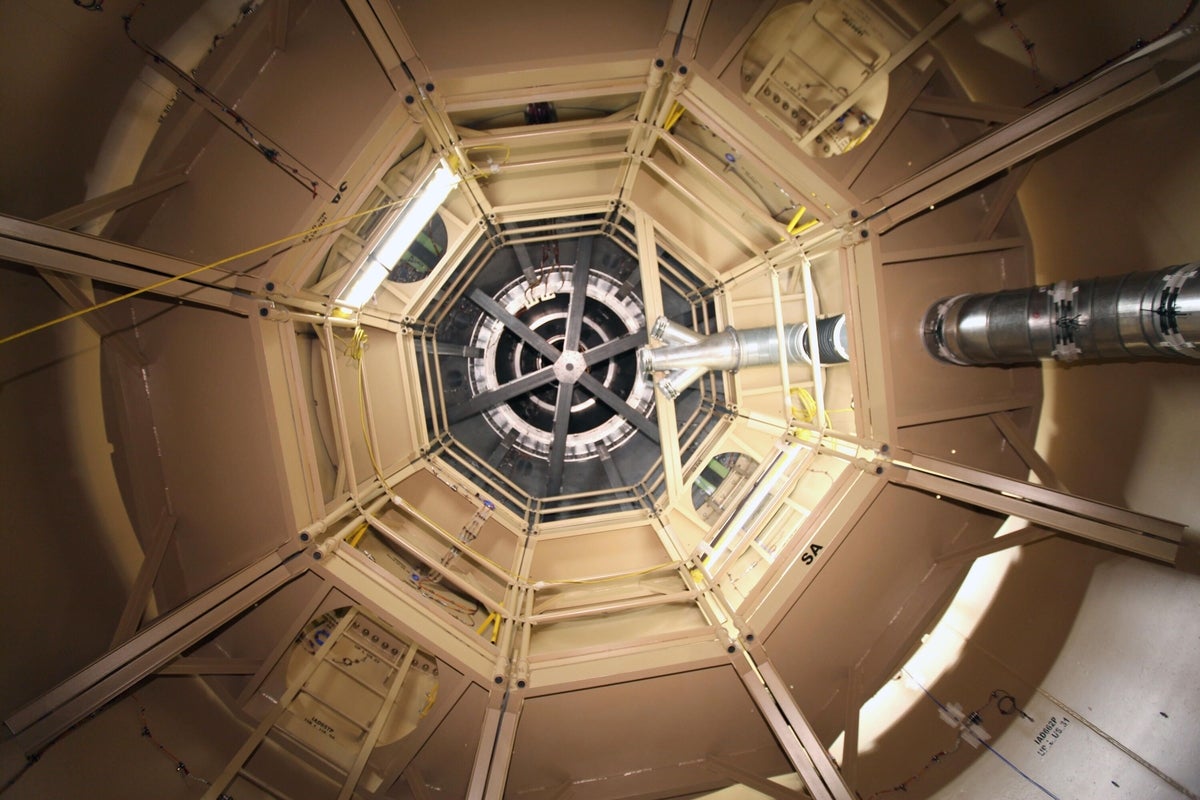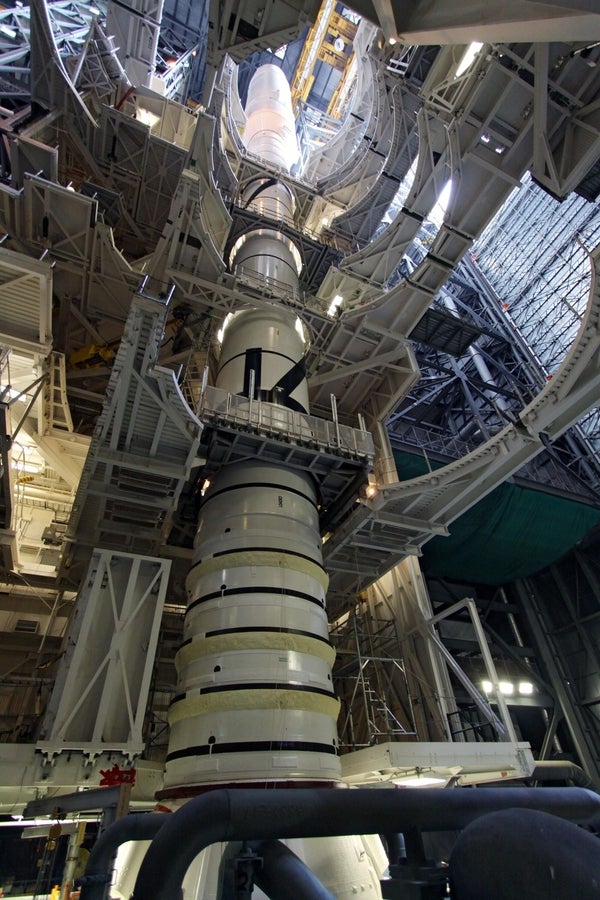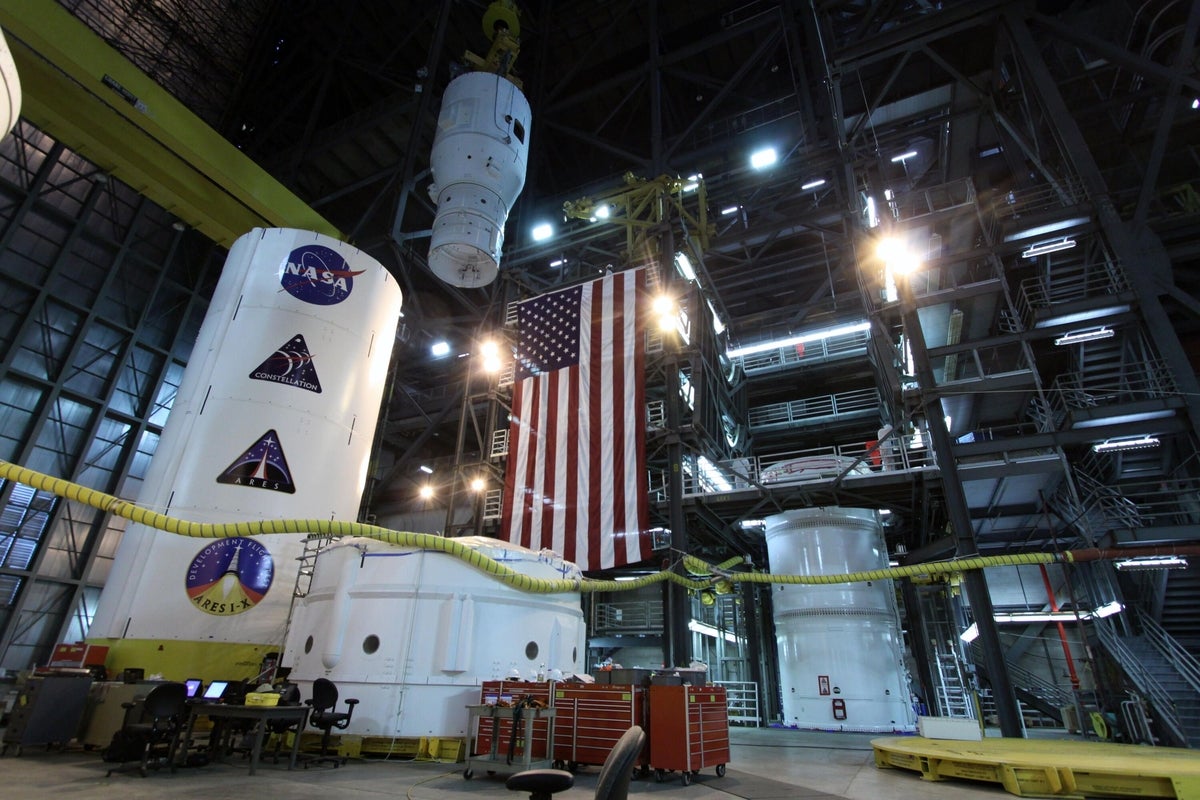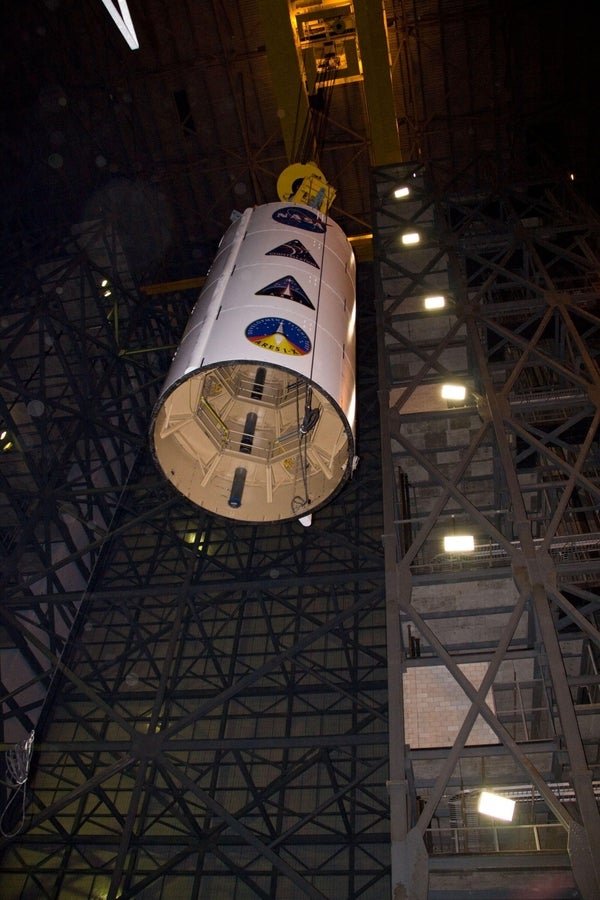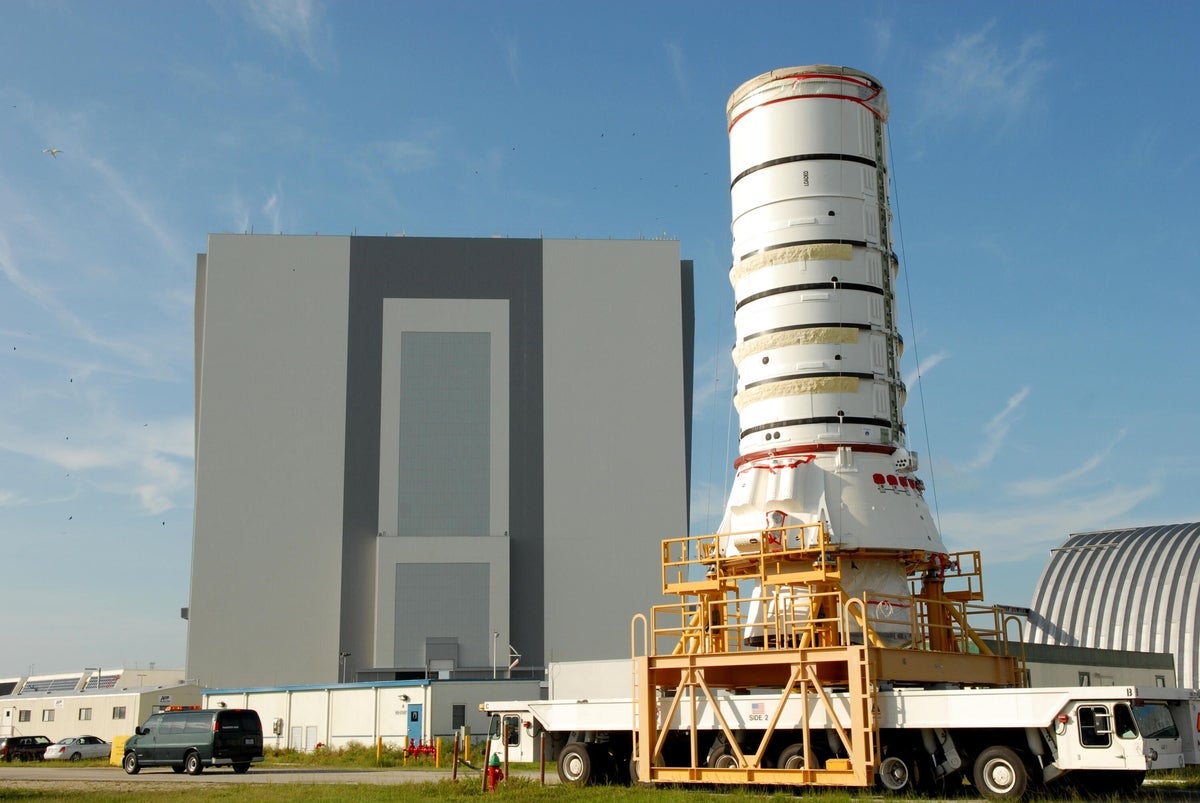Gallery: NASA launches next-gen rocket test
Image 1 of 11
NASA’s Ares I-X rocket successfully launched from Kennedy Space Center Florida Wednesday morning at 11:30 a.m. The test lasted about 6 minutes and included about two minutes of powered flight. The rocket landed in the ocean about 150 miles away where it will be recovered for examination. Watch the video of the launch.
NASA said “the 327-foot tall Ares I-X test vehicle produced 2.6 million pounds of thrust to accelerate the rocket to nearly 3 g’s and Mach 4.76, just shy of hypersonic speed.”
The launch was designed to test the hardware and flight characteristics of NASA’s next-generation rocket fleet that is expected to power humans back to the moon and eventually to Mars. It contained a phony payload which will not be recovered.
Image credit: NASA
NASA’s Ares I-X rocket.
Image credit: NASA
NASA’s Ares I-X rocket.
Image credit: NASA
The Aris I-X sitting and waiting on the launch pad.
Credit: NASA
The Aris I-X rocket is a test rocket for the Ares I (right) which will be the actual rocket that will launch space missions. They are shown in this artist’s concept.
The Aris I is slated to replace the space shuttle which is being retired in 2010. A larger rocket, the Aris V is slated to be the main force behind sending humans back to the moon and beyond.
NASA’s current rocket program is under attack. A commission appointed by President Obama says the big moon rocket won’t be ready until the late 2020’s and suggested that future efforts should be led by private contractors with government support.
Image credit: NASA
The first journey of the 327-foot-tall Ares I-X rocket was a 4.2-mile route to Launch Pad 39B. The assembly of the rocket began 11 months ago when the stages began arriving in Florida.
Image credit: NASA/Kim Shiflett
Steep ladders mounted inside the upper stage simulator provide the only access inside the vehicle for the installation of instruments and equipment.
Image credit: NASA/Glenn Benson
Platforms surround the Ares I-X in High Bay 3 of the Vehicle Assembly Building.
Image credit: NASA/Jack Pfaller
The rocket was assembled in “stacks.” Segments of the Ares I-X first stage move past other stacks toward the fifth simulator segment stack at right.
Image credit: NASA/Jack Pfaller
A crane lowers Super Stack 3, which contained stages 2-5, into High Bay 4 to be integrated with Super Stack 2 which was the upper stage.
Image credit: NASA/Jack Pfaller
The Ares I-X aft assembly is moved to the Vehicle Assembly Building for stacking.
Image credit: NASA/Jim Grossmann
